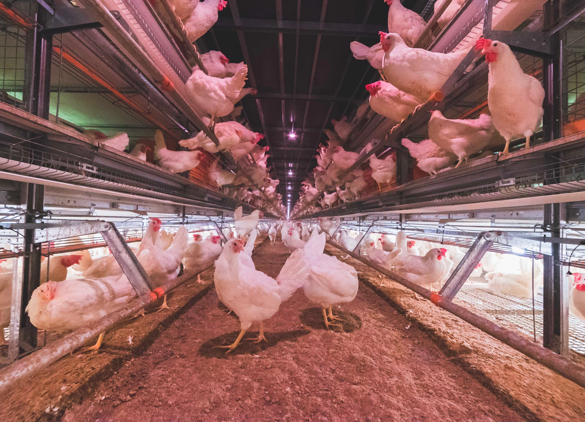Why are hens housed indoors?
April 13, 2020
April 13, 2020

A hundred years ago, eggs were produced in small flocks in farmyards. Hens were often harmed by predators or diseases and mortality was extremely high. Today many hens are housed inside barns to keep them safe and healthy.
Many of the nation’s hens are raised in Midwest states that experience extreme outdoor conditions. Weather can fluctuate between blizzards and extreme cold in the winter to 90 degree plus temperatures, thunderstorms and tornadoes in the summer. Climate controlled barns provide ideal temperature and ventilation to keep the flock comfortable.
Hens are vulnerable and they cannot protect themselves from dogs, coyotes, foxes, owls, and other predators.
Keeping flocks inside also enhances the opportunity for animal care workers and veterinarians to monitor the health of the flock regularly. Indoor housing enables farmers to shield hens from diseases that are transmitted from other animals or even humans. Barns protect hens from disease-carrying migratory waterfowl and wild birds. Access can be limited to essential personnel that wear designated clothing and use footbaths and other practices to prevent the hens from coming into contact with diseases. Click here to see other biosecurity protocols.
No matter the type of housing, U.S. egg farmers are committed to providing excellent care for their hens at all times with constant access to nutritious feed, fresh water and a safe environment.